"The Bible: in the Beginning" was released in 1966. Not only did John Huston direct and co-produce this feature film, but he almost stole it with his performance as Noah. I saw the film originally in Italy while stationed in Naples. It was dubbed in Italian which I did not speak, but under Huston's direction and his facial expressions as Noah language really was not an issue. The entire section is somewhat a comic relief for the otherwise seriousness of the rest of the Old Testament stories he reenacted.


"The Bible: in the Beginning" is divided into six main sections "The Creation", "Adam and Eve", "Cain and Able", "Noah's Ark",the story of "Abraham" and "Sodom and Gomorrah".
The story of Adam and Eve caused some concern in 1966 circles as Michael Parks playing Adam and Ulla Bergryd as Eve were naked, but strategically placed as the first picture clearly indicates to avoid any major embarrassment. I found this concern out of place due to the subject matter. I mean did these critics expect the two to be in a tux and wedding gown when they see each other?


Others in the cast included Richard Harris as Cain and Italian Actor Franco Nero as Abel,



Throughout this 174 minute epic there are short sequences such as one with Stephen Boyd playing Nimrod building "The Tower of Babel". The look on Boyd's face when he discovers everyone speaking a different language is perfect and the sequence is well planned by Huston.

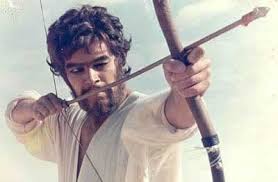
"The Bible: in the Beginning" is divided into six main sections "The Creation", "Adam and Eve", "Cain and Able", "Noah's Ark",the story of "Abraham" and "Sodom and Gomorrah".
The story of Adam and Eve caused some concern in 1966 circles as Michael Parks playing Adam and Ulla Bergryd as Eve were naked, but strategically placed as the first picture clearly indicates to avoid any major embarrassment. I found this concern out of place due to the subject matter. I mean did these critics expect the two to be in a tux and wedding gown when they see each other?
Others in the cast included Richard Harris as Cain and Italian Actor Franco Nero as Abel,
Throughout this 174 minute epic there are short sequences such as one with Stephen Boyd playing Nimrod building "The Tower of Babel". The look on Boyd's face when he discovers everyone speaking a different language is perfect and the sequence is well planned by Huston.
I am not an authority on the Bible, or one on Hollywood. The subject on this article could fill a book and I've seen a few. Within this article I will pick selected motion pictures to illustrate how Hollywood rewrites the Bible for entertainment and profit.
There are varied reasons for such motion pictures including Christian film makers using their specific beliefs, but this article is about "Hollywood the Dream Factory". Christian films are an interesting genre in themselves and sometime I might look at there creation.
The majority of the films I am speaking about appeared between 1949, when I was just turning four years of age, to 1956. The reasoning behind there creation and two other forms the revival of major Musicals and Western had a direct Political motivation. The main driving engine was actually Joseph Stalin and the House Committee on Un-American Activities.
During this five year period American's were experiencing a created Cold War fear visualizing "Papa" Joe Stalin's turning every citizen into "Godless" Communists. Just look at a list of early 1950's television programming. A major show was Richard Carlson in "I Led Three Lives" about Herbert A. Philbrick, Whose Best Seller book of the same name explained those "Three Lives" as Philbrick being an average American Family Man, an active member of the Communist Party, but an undercover agent for the Federal Bureau of Investigation. Other anti-Communist television programming included "A Man Called X", shows like "The Crusader" and "The O.S.S."/ Along with "Bill Smith U.S.A." and "Secret File U.S.A". and Civil Defense Public Service films even explaining what to do during a Nuclear Attack. At the movies many motion pictures produced during this period had Communist subplots. The still very good low budgeted "Invasion U.S.A." was about how a Communist take over of the United States affected several people. Some titles was very obvious such as "Atomic City", "I Married a Communist" and "The Communist Blue Print for America". Of course leading the crusade against Soviet domination on the Home Front was John Wayne assisted by his friend James Arness in "Big John McLain". Their characters were investigators for the House Committee on Un-American Activities looking to break a Communist Cell in Hawaii.
Then aforementioned House Committee on Un-American Activities led the infamous Blacklist. Which accused many innocent people of being members of the Communist Party. While not taking into consideration that during World War 2 Soviet Russia was our alley and joining the Party might have meant something entirely different than after the War and who patriotically joined. Many Americans the committee investigated would leave the country. The Black List included such names as Lillian Hellman, Lee Grant, Paul Robeson, Eddie Albert, John Ireland, Richard Attenborough, Lee J. Cobb, Pete Seeger and Charlie Chaplin to name just a few of. It would take Kirk Douglas standing up for Dalton Trumbo who had written the screenplay for his "Spartacus" and the excellent Otto Preminger motion picture "Exodus" to break this in 1960.
The Motion Picture Studios to avoid controversy and charges postulated what was a better proof of being a loyal God Loving American than making movies based upon the Bible?
This article will be divided into five subsections and I will use motion pictures I have seen to illustrate each topic. These sections are:
Back Story
Events from the Bible
Motion Pictures Based Upon Biblical Personages
Passion Plays
BACK
STORY
In 1907 American’s saw the first motion picture inspired by the New Testament. As with films of the time it was a 15 minute version of General Lew Wallace’s “Ben Hur: A Tale of the Christ”. The movie was in violation of copyright laws which the early motion picture industry ignored regularly to have source material. The film’s release angered the Estate of General Lew Wallace and a lawsuit was filed against the filmmaker Kalen Studios. The Court ruling established the precedent that all movie companies had to obtain permission to use any copyrighted material. I will be looking at two major versions of General Wallace’s novel in Part Three.
The first true American Passion Play motion picture was released October 1912 and was filmed in Palestine. The film is still highly regarded and has been preserved and remastered.
However, such Biblical motion pictures were not predominant in the United States prior to 1923, but they were throughout Europe and especially in Italy. As I am not interested in those foreign films, but those made in “Hollywood”.
EVENTS FROM THE BIBLE
In the beginning Cecil B. DeMille created the real “Hollywood Biblical” motion picture. Before DeMille these movies had been formless and empty, but DeMille said “Let There Be Biblical Sex” and it was good.
Cecil B. DeMille’s 1923 motion picture “The Ten Commandments” is recognized as the first true “Hollywood” Biblical Epic, but it wasn’t made because of DeMille’s love of scripture.
Cecil B. DeMille like other directors felt he was being “harassed” by Will H. Hayes a Presbyterian Elder hired by the motion picture industry to monitor the morality of the that industry in 1922. This action was a result of all the scandals that were occurring such as the “Fatty” Arbuckle rape case and the strange death of William Desmond Taylor.
In 1923 DeMille believed that Hays would not dare attempt to censor a movie taken from the Bible and with a morality tale attached. So he made “The Ten Commandments” for the sole purpose of proving his premise.
The running time of this silent classic was 136 minutes, but less than a third of the motion picture had to do with Moses and the Exodus. It was that remaining two-thirds that was Demille’s response to Will Hayes.
DeMille’s “Morality Tale” concerned two brothers John and Danny McTavish. John, a nice Biblical name choice, became a minister and Danny a corrupt Contractor. Who proceeds to break all of the “Ten Commandments” without one objection out of Will H. Hayes. The film received positive reviews on its high religious standards. Not quite what DeMille expected, but what he would push to the extremes in later motion pictures I will mention.
In 1907 American’s saw the first motion picture inspired by the New Testament. As with films of the time it was a 15 minute version of General Lew Wallace’s “Ben Hur: A Tale of the Christ”. The movie was in violation of copyright laws which the early motion picture industry ignored regularly to have source material. The film’s release angered the Estate of General Lew Wallace and a lawsuit was filed against the filmmaker Kalen Studios. The Court ruling established the precedent that all movie companies had to obtain permission to use any copyrighted material. I will be looking at two major versions of General Wallace’s novel in Part Three.
The first true American Passion Play motion picture was released October 1912 and was filmed in Palestine. The film is still highly regarded and has been preserved and remastered.
However, such Biblical motion pictures were not predominant in the United States prior to 1923, but they were throughout Europe and especially in Italy. As I am not interested in those foreign films, but those made in “Hollywood”.
EVENTS FROM THE BIBLE
In the beginning Cecil B. DeMille created the real “Hollywood Biblical” motion picture. Before DeMille these movies had been formless and empty, but DeMille said “Let There Be Biblical Sex” and it was good.
Cecil B. DeMille’s 1923 motion picture “The Ten Commandments” is recognized as the first true “Hollywood” Biblical Epic, but it wasn’t made because of DeMille’s love of scripture.
Cecil B. DeMille like other directors felt he was being “harassed” by Will H. Hayes a Presbyterian Elder hired by the motion picture industry to monitor the morality of the that industry in 1922. This action was a result of all the scandals that were occurring such as the “Fatty” Arbuckle rape case and the strange death of William Desmond Taylor.
In 1923 DeMille believed that Hays would not dare attempt to censor a movie taken from the Bible and with a morality tale attached. So he made “The Ten Commandments” for the sole purpose of proving his premise.
The running time of this silent classic was 136 minutes, but less than a third of the motion picture had to do with Moses and the Exodus. It was that remaining two-thirds that was Demille’s response to Will Hayes.
DeMille’s “Morality Tale” concerned two brothers John and Danny McTavish. John, a nice Biblical name choice, became a minister and Danny a corrupt Contractor. Who proceeds to break all of the “Ten Commandments” without one objection out of Will H. Hayes. The film received positive reviews on its high religious standards. Not quite what DeMille expected, but what he would push to the extremes in later motion pictures I will mention.
The total budget for the motion picture was $1,475,837 and the film grossed for Paramount Studios $4,168,790. Obviously the audiences liked sex with their Bibles.
This was a multi-starring widescreen technicolor production filmed in the Holy Land with a budget of $13 million dollars. The number 13 was not unlucky to DeMille as the initial gross was 122.7 million in 1956 dollars.
The motion picture starred Charlton Heston as Moses and Yul Bryner as Ramessess. The large supporting cast included Edward G. Robinson, Anne Baxter, Vincent Price, Yvonne DeCarlo and as the love interest Debra Paget and John Derek.
Showing his loyalty also in the cast was Henry Wilcoxon who appeared in many of DeMille's motion pictures starting opposite Claudette Colbert in 1934's "Cleopatra" as Marc Anthony.
The highlight of the film was the parting of the red sea. Here is a comparison of both the 1923 and 1956 versions of that sequence.
Not much difference as the techniques remained the same.
Although this was a "Biblical Motion Picture" telling the story of the Hebrew Exodus as I've mentioned sex sells. There are two major underlining stories in the motion picture. The first involves Yul Bryner as Ramessess II, Charlton Heston as Moses and between the two Ann Baxter as Nefretiri who loves Moses, but must marry the next Pharaoh which becomes Bryner.
The second involves the Hebrew Slave Girl Lilia played by Debra Paget who is in love with Joshua played by John Derek. The Overseer Baka played by Vincent Price brings her into his household out of his desire to possess her. After Baka is killed by Moses the truth of Moses' Hebrew birth is revealed to Dathan played by Edward G. Robinson to Ramessess II who makes him the new Overseer. So now Lilia is his.
Moving forward another fifty-eight years 2014 saw Ridley Scott make "Exodus: Gods and Kings" with Christian Bale as a very human Moses and Joel Edgerton as a very human Ramesssess II,
This version of the life of Moses and the Exodus attempts to be more realistic in its approach to the 10 Plagues which an Egyptian Scientist explains progresses logically from one to another. Along with the parting of the Red Sea actually happening at low tide when the sea could be walked across.
However, the motion picture does not leave out God and miracles. In the case of the 10 Plagues Moses first attempts to make Ramessess let the Hebrew Slaves go by attacking Egypt's food sources. He does this by first training the Hebrew men in the art of warfare and tactics. This sequence helps also to explain how these slaves became fierce fighters against their enemies. The plan fails and God steps in with the Plagues.
Moses is shown in the motion picture making human mistakes. One example shows the Hebrews being pursued by Ramessess and his troops. Moses makes a wrong decision bringing all of his people to the wrong part of the Red Sea. At this part of the Red Sea the tide never goes as low as the spot he planned to take them too in their escape. A place Moses had crossed earlier in his exile. He prays for forgiveness and God answers by first lowering the sea and then destroying the pursuing army.
Ridley Scott's approach to the Biblical Exodus story is not that far different than Cecil B. DeMille's approach. Although DeMille tends toward more spectacle. While Scott attempted probable real solutions for the miracles. Both men tell the basic Bible story and both men were praised and criticized. As you will read in 1956 Biblical Motion Pictures were in. While in 2014 films such as Marvel's "The Avengers", "Guardians of the Galaxy" and teenage films directed toward young women like "The Hunger Games" are what most movie audiences wanted. The idea of a Biblical film in General release seemed out of place except in areas of the country were strong religious beliefs are predominate.
Even today DeMille's "The Ten Commandments" still draws a strong television audience share for Easter. On April 5, 2015 there were 6.80 million viewers of the motion picture even with commercial breaks. Even though every member of that viewing audience can purchase either a DVD, or beautiful Blue-Ray copy for around twenty dollars.
Of interest is that Scott's film had a budget of $140 million dollars and grossed $260 million. Compare those figures to the one's I already stated about to DeMille's production with a $13 million dollar budget and a $122.7 million dollar gross in 1956 dollars. Now adjust the 1956 film's gross for inflation and that amount now becomes $2,278,026,865 in 2015 dollars. Admittedly DeMille's budget today would be a staggering $113,901,343.
What is also noticeable about these two film treatments of the Exodus story, as I mentioned earlier about the Red Sea sequence in 1923, nothing has really changed except the technology used to obtain the effect. It is very hard to come up with another way of showing Pharaoh's troops being drowned, or the approach of the Angel of Death for the 10th Plague. As for the Plagues themselves the same argument can be made. Although Ridley Scott used excellent realistic make-ups on his actors which would not have been permitted in 1956, or 1923.
Here is a link tp the trailer for the 1956 "The Ten Commandments"
https://www.youtube.com/watch?v=UtVycdtjy_E
Here is a link to the trailer for "Exodus: Gods and Kings"
https://www.youtube.com/watch?v=t-8YsulfxVI
I'd like to move to another Biblical event turned into a "Hollywood" epic director Robert Aldrich's 1962 "Sodom and Gomorah" aka: "The Last Days of Sodom and Gomorrah".

The motion pictures stars Stewart Granger as Lot, Pier Angeli as the wife of Lot Ilidth, Stanley Baker as Prince Astaroth, Anouk Aimee as the Queen of Sodom and Rossana Podesta as Shuah.
The movie was not actually pure Hollywood as it was a co-production with Italy and France. There are two running times for the motion picture. The original release ran 154 minutes and another was edited by 43 minutes.
With the subject matter the film is almost a tribute to the style of Cecil B. DeMille by Robert Aldrich as he plays up all the immoralities of the twin cities with his beautiful cast, but leans to the "Peplum (Sword and Sandal as they were known in the United States) Italian films of the period. The Amazon owned IMBd movie site describes the story as:
Hebrew leader Lot (Stewart Granger) leads his people to a fertile valley adjacent to the cities of Sodom and Gomorrah, hotbeds of vice and corruption ruled by the merciless Queen Bera (Anouk Aimée). When Lot orders a dam to be busted in order to prevent destruction of the cities by the attacking Helamites, the queen, in gratitude, allows Lot's people to settle in Sodom. Soon, however, the veneer of civilization begins crumbling as Lot and the Hebrews become corrupted by the Sodomites.
The musical score was by multiple Oscar winning Hungarian composer Miklos Rozsa "Lust for Life", "King of Kings", "Ben Hur" and Ray Harryhausen's "The Golden Voyage of Sinbad" among many other motion pictures.
At the end of the film you have a direct reference to the Old Testament as Pier Angeli doesn't heed Lot's warning and turns to look at the destruction of the Twin Cities and is turned into a Pillar of Salt. However, it is that destruction which reaches a more modern interpretation by Aldrich as the audiences sees both cities apparently destroyed by Atom Bombs complete with the mushroom clouds.
The following is a link to a non-widescreen presentation of the 154 minute version in English.
http://www.dailymotion.com/video/x2955i5_sodom-and-gomorrah-1962-stewart-granger-pier-angeli-stanley-baker-sword-and-sandal_shortfilms
In 1966 producer/director John Huston decided to make a Biblical epic of his own. As with "The Last Days of Sodom and Gomorrah" this is an American-Italian co-production with Dino De Laurentis. Originally Huston stated he planned to make a movie covering the entire Old Testament, but when production actually began it was on a smaller scale and a subtitle was added to the title "The Bible". The motion picture now became "The Bible: In the Beginning".
George C. Scott is cast as Abraham with Ava Gardner playing Sarah in the longest section of the motion picture. Both actors age throughout Abraham's story.


An interesting concept was having Peter O'Toole play all three angels of destruction in the "Sodom and Gomorrah" sequence. Each of the Angel's had a different color and a slightly different look to them. Not as detailed as Robert Alrich's motion picture the shorter story works actually better. The presumption being that the audience is already familiar with it.

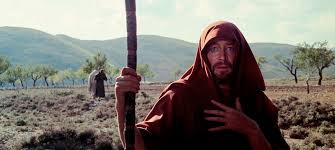
The film is highly enjoyable, but strangely is considered also a "Peplum (Sword and Sandal)" picture. I think as with "The Last Days of Sodom and Gomorrah" the fact it was filmed in Italy during the 1960's creates that view in some minds. However, as the stories are about Adam and Eve, Noah and Abraham this view is odd as "The Bible: In the Beginning" is not anything like Steve Reeves in either "Hercules Unchained", or "Duel of the Titans" for example.
The cast is excellent and Huston's direction is at the top of his game, but the film is also an example as how star power over takes Biblical accuracy.
MOTION PICTURES BASED UPON BIBLICAL PERSONAGES
I now return to Cecil B. DeMille and his 1949 motion picture "Samson and Delilah" which was a major Hollywood film, DeMille style, about the two Biblical characters and the strength of Samson.

Playing Sampson was Victor Mature and Deliliah was played by sultry Hedy Lamar.

The cast included Angela Lansbury as Delilah's sister Semadar and
George Sanders as The Saran of Gaza
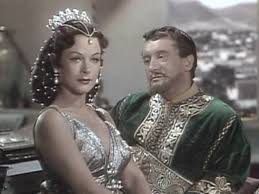
and DeMille's stalwart Henry Wilcoxon as Ahtur

Any similarity to the Biblical story was sparse as this was Cecil B. DeMille at his best were sex takes precedent over scripture. Like most of DeMille's films this one was described as a "Romantic Religious Epic".
The highlight of the motion picture is the climax. Where Sampson now blinded after having his hair cut by Delilah's treachery brings the pagan temple down.
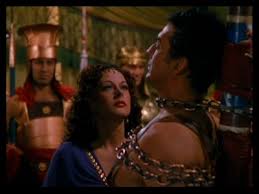
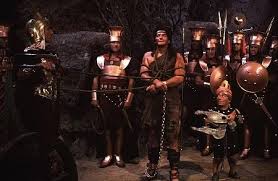
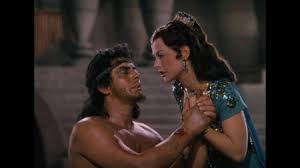
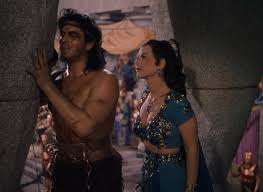
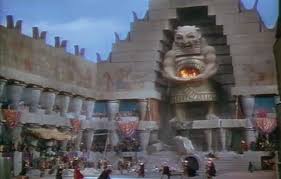
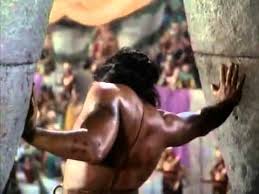
The movie had a budget of $3,057,563 and grossed $25,600,000. The financial figures do not reflect the critical response to the film. Variety wrote "Sampson and Delilah" was a:
Three years later Daryl F, Zanuck produced what he described as a serious Biblical motion picture directed by Henry King. This "serious" film was about the adultery of King David played by Gregory Peck with Uriah's wife Bathsheba played by Susan Hayward. Weaving into the conflict to supplement the adultery story line David's history and torment over having become King.


At times Zanuck and King's Biblical epic is just boring and at others has the audience engaged with steamy love scenes between the leads. In my opinion Peck is totally miscast and is only going through the motions. Although with the popularity of these films especially to show were an actor stood to The House Committee on Un-American Activities it was the right choice. The cast also included Raymond Massey as Nathan, Kieron Moore as Uriah, James Robertson Justice as Abishal and Francis X. Bushman as King Saul.
As I just mentioned the film weaves in the earlier story of David which permits Henry King to include the Philistine Giant Goliath, but it is, as the tag line reads, the "Most Forbidden of the World's Great Love Stories" that dominates the film and therefore removes the Bible in typical Hollywood fashion.
The 1951 film was budgeted at $2.17 million dollars and grossed in the United States and Canada $7 million making it the most popular film of that year. That in itself is a major accomplishment when among the other films for 1951 were Marlon Brando and Vivian Lee in "A Streetcar Named Desire", Elizabeth Taylor and Montgomery Cliff in "A Place in the Sun" and Humphrey Bogart and Katherine Hepburn in "The African Queen". Proving once more that the Bible sells, or is that really Biblical Sex at the time? Ask a film buff if they remember "David and Bathseba" and they probably don't, but mention any of the other three motion pictures and odds are they know at least the titles.


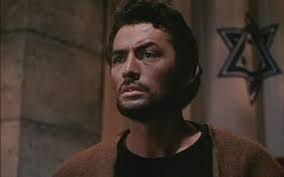
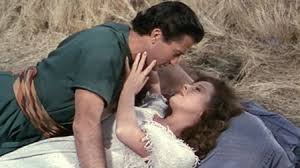
In 1953 Columbia Pictures made "Salome" about Herod's step daughter who according to Biblical Historians was the New Testament's alleged dancer that brought the head of John the Baptist to her step father. Playing "Salome" was Rita Hayworth who was a very good choice as she began her career as a professional dancer. Slight technicality in 1953 Hayworth was 34 years of age while the real Salome is believed to have been either 14, or 15 at the time she performed "The Dance of the Seven Veils" for Herod.
Co-starring in the picture was Stewart Granger as Roman Commander Claudius and Salome's love interest.
_06.jpg)

Charles Laughton had fun as always playing Herod.
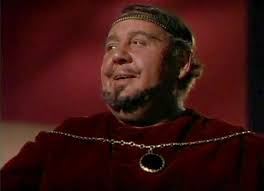
British stage actor Alan Badel played John the Baptist in his first film role.

Forget Biblical history as Salome falls for Claudius and they attempt to save John the Baptist from the death ordered by her mother Herodias. In the final scenes of the motion picture both Salome and Claudius convert to Christianity and Hayworth and Granger are seen listening to Jesus, face not shown, giving his "Sermon on the Mount".

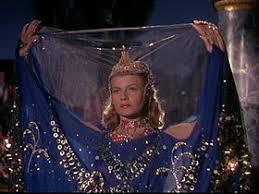
The film is noted solely for Rita Hayworth doing "The Dance of the Seven Veils" considered by her the hardest dance routine she ever did. It required many retakes to get it perfect.
Here is a link to the trailer for "Salome" and I urge my readers to watch it. It is a perfect example of how Hollywood twisted the Bible to prove to The House Committee on Un-American Activities that they had high moral values. Of course note how it also flaunted the implied sexuality of the subject matter that the studio's knew they could get away with to attract an audience. At the time this was the most popular motion picture in France.
https://www.youtube.com/watch?v=rg4TR-JVPuI
1959 was a great year for Biblical figures in the movies. In April Howard Keel normally associated with musical motion pictures like "Kiss Me Kate" and "Showboat" played "The Big Fisherman".

Howard Keel was cast in the title role as the disciple of Jesus known as Simon-Peter. The film was based upon Lloyd C. Douglas' 1948 novel of that name and he wrote it as the sequel to his very successful 1942 novel "The Robe". I am sure Howard Keel was thinking this film would be as popular as the 1953 motion picture of Douglas' first novel when he took the title role. Unfortunately for his career it was anything but that. I will mention this other film in the fifth section of this article.

The story is of course fiction as are all of Lloyd C. Douglas' novels and tells of the life of Peter from being a fisherman to a disciple of Jesus. It also tells the story of a young girl named Fara played by Susan Kohner who discovers she is the daughter of Herod-Antipas played by Herbert Lom. This subplot has her setting out to kill him, because he left her Arab mother to marry Herodias played by Martha Hyer. Unknown to Fara there is the Arab Prince Voldi played by John Saxon who is in love with her. The film becomes a very long three hour tale about the redemption of both Simon-Peter and Fara, but lacks the spectacle of most Biblical films of the period even "David and Bathseba".

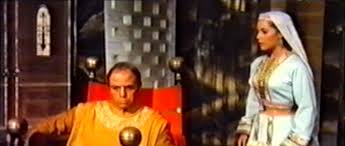
An interesting concept was having Peter O'Toole play all three angels of destruction in the "Sodom and Gomorrah" sequence. Each of the Angel's had a different color and a slightly different look to them. Not as detailed as Robert Alrich's motion picture the shorter story works actually better. The presumption being that the audience is already familiar with it.
The cast is excellent and Huston's direction is at the top of his game, but the film is also an example as how star power over takes Biblical accuracy.
MOTION PICTURES BASED UPON BIBLICAL PERSONAGES
I now return to Cecil B. DeMille and his 1949 motion picture "Samson and Delilah" which was a major Hollywood film, DeMille style, about the two Biblical characters and the strength of Samson.
Playing Sampson was Victor Mature and Deliliah was played by sultry Hedy Lamar.
The cast included Angela Lansbury as Delilah's sister Semadar and
George Sanders as The Saran of Gaza
and DeMille's stalwart Henry Wilcoxon as Ahtur
Any similarity to the Biblical story was sparse as this was Cecil B. DeMille at his best were sex takes precedent over scripture. Like most of DeMille's films this one was described as a "Romantic Religious Epic".
The highlight of the motion picture is the climax. Where Sampson now blinded after having his hair cut by Delilah's treachery brings the pagan temple down.
The movie had a budget of $3,057,563 and grossed $25,600,000. The financial figures do not reflect the critical response to the film. Variety wrote "Sampson and Delilah" was a:
lusty action story with a heavy coating of torrid-zone romance.Then Variety added:
Victor Mature fits neatly into the role of the handsome but dumb hulk of muscle that both the Bible and DeMille make of the Samson character. Hedy Lamarr never has been more eye-filling and makes of Delilah a convincing minx. George Sanders gives a pleasantly light flavor of satirical humor to the part of the ruler, while Henry Wilcoxon is duly rugged as the military man.A perfect description of the Hollywood Biblical Epic.
Three years later Daryl F, Zanuck produced what he described as a serious Biblical motion picture directed by Henry King. This "serious" film was about the adultery of King David played by Gregory Peck with Uriah's wife Bathsheba played by Susan Hayward. Weaving into the conflict to supplement the adultery story line David's history and torment over having become King.
At times Zanuck and King's Biblical epic is just boring and at others has the audience engaged with steamy love scenes between the leads. In my opinion Peck is totally miscast and is only going through the motions. Although with the popularity of these films especially to show were an actor stood to The House Committee on Un-American Activities it was the right choice. The cast also included Raymond Massey as Nathan, Kieron Moore as Uriah, James Robertson Justice as Abishal and Francis X. Bushman as King Saul.
As I just mentioned the film weaves in the earlier story of David which permits Henry King to include the Philistine Giant Goliath, but it is, as the tag line reads, the "Most Forbidden of the World's Great Love Stories" that dominates the film and therefore removes the Bible in typical Hollywood fashion.
The 1951 film was budgeted at $2.17 million dollars and grossed in the United States and Canada $7 million making it the most popular film of that year. That in itself is a major accomplishment when among the other films for 1951 were Marlon Brando and Vivian Lee in "A Streetcar Named Desire", Elizabeth Taylor and Montgomery Cliff in "A Place in the Sun" and Humphrey Bogart and Katherine Hepburn in "The African Queen". Proving once more that the Bible sells, or is that really Biblical Sex at the time? Ask a film buff if they remember "David and Bathseba" and they probably don't, but mention any of the other three motion pictures and odds are they know at least the titles.
In 1953 Columbia Pictures made "Salome" about Herod's step daughter who according to Biblical Historians was the New Testament's alleged dancer that brought the head of John the Baptist to her step father. Playing "Salome" was Rita Hayworth who was a very good choice as she began her career as a professional dancer. Slight technicality in 1953 Hayworth was 34 years of age while the real Salome is believed to have been either 14, or 15 at the time she performed "The Dance of the Seven Veils" for Herod.
Co-starring in the picture was Stewart Granger as Roman Commander Claudius and Salome's love interest.
_06.jpg)
Charles Laughton had fun as always playing Herod.
British stage actor Alan Badel played John the Baptist in his first film role.
Forget Biblical history as Salome falls for Claudius and they attempt to save John the Baptist from the death ordered by her mother Herodias. In the final scenes of the motion picture both Salome and Claudius convert to Christianity and Hayworth and Granger are seen listening to Jesus, face not shown, giving his "Sermon on the Mount".
The film is noted solely for Rita Hayworth doing "The Dance of the Seven Veils" considered by her the hardest dance routine she ever did. It required many retakes to get it perfect.
Here is a link to the trailer for "Salome" and I urge my readers to watch it. It is a perfect example of how Hollywood twisted the Bible to prove to The House Committee on Un-American Activities that they had high moral values. Of course note how it also flaunted the implied sexuality of the subject matter that the studio's knew they could get away with to attract an audience. At the time this was the most popular motion picture in France.
https://www.youtube.com/watch?v=rg4TR-JVPuI
1959 was a great year for Biblical figures in the movies. In April Howard Keel normally associated with musical motion pictures like "Kiss Me Kate" and "Showboat" played "The Big Fisherman".
Howard Keel was cast in the title role as the disciple of Jesus known as Simon-Peter. The film was based upon Lloyd C. Douglas' 1948 novel of that name and he wrote it as the sequel to his very successful 1942 novel "The Robe". I am sure Howard Keel was thinking this film would be as popular as the 1953 motion picture of Douglas' first novel when he took the title role. Unfortunately for his career it was anything but that. I will mention this other film in the fifth section of this article.
The story is of course fiction as are all of Lloyd C. Douglas' novels and tells of the life of Peter from being a fisherman to a disciple of Jesus. It also tells the story of a young girl named Fara played by Susan Kohner who discovers she is the daughter of Herod-Antipas played by Herbert Lom. This subplot has her setting out to kill him, because he left her Arab mother to marry Herodias played by Martha Hyer. Unknown to Fara there is the Arab Prince Voldi played by John Saxon who is in love with her. The film becomes a very long three hour tale about the redemption of both Simon-Peter and Fara, but lacks the spectacle of most Biblical films of the period even "David and Bathseba".
The film makers approached Walt Disney to distribute the film, but was against it because of its religious tone that did not fit into the Disney image, but his brother Roy liked it. As a result Walt gave in and the Buena Vista Company distributed it. This did have the effect of attracting audiences to "The Big Fisherman" as some people thought Disney had made it.
The 1987 Motion Picture Guide had these comments about the film:
long, often-enraging and totally miscast with a nonsinging Keel as Saint Peter
...just so much biblical nonsense because such liberties are taken that any serious student of the life (of St, Peter) and surrounding events will take exceptionThe Hollywood Reporter wrote:
the picture is three hours long and except for those who can be dazzled by big gatherings of props, horses and camels, it is hard to find three minutes of entertainment in itOn the other hand 1959 saw "Solomon and Sheba".
Where Cecil B. DeMille's 1949 "Samson and Deliliah" was described as a "Romantic Religious Epic" based upon "The Holy Bible: the Book of Judges". Ten years later King Vidor's "Solomon and Sheba" was described as an "Epic Historical Romance Film" based upon the "Book of Kings" and the "Book of Chronicles",
"Based Upon" the permissive two words that any screenwriter uses to create their version of events Biblical, or otherwise.
In the final version of "Solomon and Sheba" Yul Brynner was cast as King Solomon and Gina Lollobrigida as the Queen of Sheba.
The motion picture had a budget of $5 million dollars and grossed $12,200,000 and can be found playing frequenting on the Trinity Broadcast Network on television. However, getting to that final budget figure is a sad story.
Gina Lollobrigida was signed for a percentage of the profits by Edward Small in 1955.Small had been working on a the idea and a script since 1953 the height of the Hollywood Biblical motion pictures. Both Tyrone Power and then Yul Brynner initially turned down the role of Solomon, but after the part was rewritten Power accepted and shooting began in September 1958. Two thirds of the motion picture had been shot when Tyrone Power had a fatal heart attack on the set during the filming of a sword duel between George Sanders and himself. At this point to honor his friend Yul Brynner took the part and re-shooting began in November. The London Premier was in October of 1959 and the film had its United States Premier in New York Christmas Day.
Playing Solomon's brother Adonijah for both Tyrone Power and Yul Brynner was George Sanders, The rest of the cast which had to re-shoot scenes included David Farrar as Pharaoh Siamun, Harry Andrews as Baltor, Laurence Naismith as Hezrai and Finley Currie played King David.
On IMBd Ron Kerrigan gives this very good plot summary to the final motion picture:
Shortly before his death in ancient Israel King David has a vision from God telling him that his younger son Solomon should succeed him as king. His other son Adonijah is unhappy and vows to attain the throne. Meanwhile the Egyptian Pharoah agrees to cede a Red Sea port to the Queen of Sheba is she can find a way to destroy Solomon, whose wisdom and benevolent rule is seen as a threat to more tyrannical monarchs in the region. Sheba, Pharoah, Adonijah, the leaders of the Twelve Tribes and his own God make life difficult for Solomon who is tempted by Sheba to strayOn a personal level I have always enjoyed this motion picture and thought it was one of the best of the Hollywood 1950's Biblical Epics when I saw it just after the New York Premier.
Variety wrote that Gina Lollobrigida played:
the queen to be a woman of sharp brain as well as sensual beautyand that Yul Brynner:
does a fine job in presenting a Solomon who credibly suggests a singer of songs, yet finally is a man of ordinary flesh and blood who cannot resist Sheba.Director King Vidor criticized Yul Brynner's performance saying Tyrone Power's performance was much more convincing.
Here is a link to a YouTube video showing some of Power's scenes and there is no question his performance is different than Brynner's and might be stronger, but compared to Gregory Peck as King David. Yul Bryner's performance as Solomon is just right and he balances it with the always under appreciated Gina Lollobrigida's performance perfectly.
https://www.youtube.com/watch?v=QP9OV3Zl-0M
This is a picture of Tyrone Power as Solomon with Gina Lollobrigdia as Sheba
Yul Brynner in a similar pose.
There are many strong and heroic women in the Bible and two of them made it into "Hollywood" Biblical productions.
What "The Big Fisherman" attempted to tell in three hours 1960's "The Story of Ruth" succeeded to tell in two hours and twelve minutes. An interesting Biblical picture unlike the Hollywood Epics of the 1950's based partly upon "The Book of Ruth".
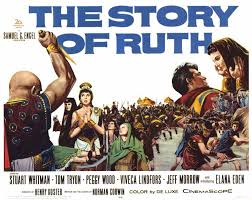
The screenplay was by Golden Age of Radio writer Norman Corwin who wrote the Academy Award nominated screenplay for the Vincente Minnelli/Kirk Douglas film about Van Gogh 1956's "Lust for Life" based upon the Irving Stone novel. Corwin created a back story for Ruth, played by Israeli actress Elana Eden, as a pagan idolatress who after seeing a young girl sacrificed has conflicts with her life. She falls in love with a Moabite man named Mahlon, played by Tom Tryon, However, Mahlon along with his family are condemned to the mines. Ruth and Mahlon attempt an escape but he is wounded and just before he dies they are married.

At this point the motion pictures starts to follow "The Book of Ruth" as Ruth meets the other widows Naomi, Peggy Wood, and Orpah, Ziva Rodann. There follows more trials for Ruth and finally she will marry Boaz played by Stuart Whitman. The movie closes as the final verses from "The Book of Ruth" are actually read.

As you can tell the tone is very different from those I have already mentioned. The motion picture was very popular at the time with Christian groups and reviewers, because of that tone. In the United States rentals of 16 mm prints of "The Story of Ruth" to church groups had recovered the total budget by January 4, 1961, or less than seven months after its release.
Describing the performance of Elana Eden:
Variety said:
As to the overall motion picture Variety wrote;

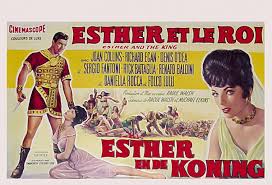
To begin with the film actually is titled "Ester e il re" as the majority of the funding was from Italian Production Companies "Galatea Film" and "Titanus". Although director "One Eyed" Raul Walsh is given full screen credit as Producer. For those who love Italian Horror films the co-director of "the Italian segments" was Mario Bava. However, Mario Bava was the movies Cinematographer and to see his work alone makes this film special. There was also a controversy mainly in Italy over how much of the film was actually directed by Walsh and not Bava. Raul Walsh would direct only two more films after "Esther and the King".
The look of the motion picture can be described as a true Biblical-Peplum (Sword and Sandal) Italian movie. I fondly remember it. Just watch the opening credits and they are almost totally Italian names, but as this was Walsh's film I include it as a "Hollywood" Biblical motion picture and especially for the comparison with "The Story of Ruth",
The four main characters tied to the story of Purim are Joan Collins as Esther, Richard Egan as King Ashasuerus, Irish actor Denis O'Dea as Mordecai and Italian actor Sergio Fantoni, best known to American audiences for "Von Ryan's Express", as Haman.
Rotten Tomatoes described the film this way:

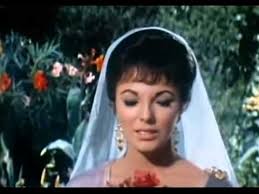


Here's a YouTube link to the full movie.
https://www.youtube.com/watch?v=SQ6qYypfmIo
PASSION PLAYS
In 1927 Cecil B. DeMille made what is considered the second film in his "Biblical" Trilogy "King of Kings".
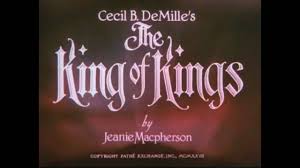

DeMille opened this motion picture and closed it using the new two strip technicolor process. Otherwise the film was shot in black and white.
The motion picture tells of the last days of Jesus Christ played by actor H.B. Warner. 29 years later Warner would be part of the cast of DeMille's 1956 "The Ten Commandments".


The script for the motion picture was by Jeanie MacPherson. She had sought out Cecil B. DeMille in 1917 to continue her career as an actress, but he was well aware of MacPherson's writing skills and hired her as his chief screenplay writer. Starting with 1917's "A Romance of the Red Woods". Jeannie MacPherson would write 30 of DeMille's next 34 motion pictures including the 1923 "Ten Commandments"


Relaying on his established Biblical sex imagery Mary Magdalene is portrayed as a free spirited courtesan enjoying multiple men. In one sequence she learns that Judas, whom she is interested in, is meeting a carpenter other people are speaking about and Mary rides out in a chariot pulled by Zebras to see him. Near the movies ending DeMille uses a multiple exposure shot as Jesus casts out "The Seven Deadly Sins" which have been possessing the young woman all this time.


Above H.B. Warner as Jesus and William Boyd as "Simon of Cyrene". Who was said to have helped carry the cross. Boyd would start in 1935 playing the character of "Hopalong Cassidy" in the first of 66 motion pictures. He was able to purchase the rights to the film character and later he had a radio program in the early 1950's and released the Cassidy motion pictures to television as part of a weekly series.
Here are some of DeMille's two strip technicolor scenes the last two being the resurrection.
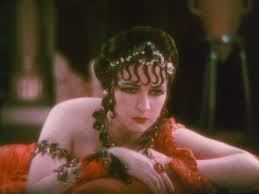

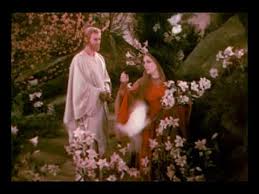
The Great Wall originally was made for "King of Kings". It was reused on Skull Island to keep the 1933 "King Kong" away from the natives.
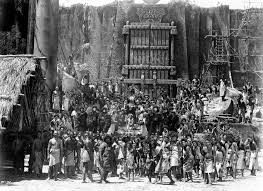
Here are two photos of the world premier of "King of Kings" which was the first film to be shown at the new Grauman's Chinese Theater on Hollywood Boulevard May 18, 1927.

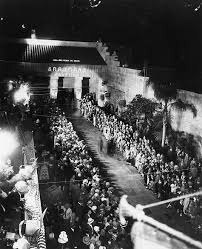
One last bit of trivia in the cast as an extra was future author Ayn Rand who met her husband, also an extra, Frank O'Connor on the set.
Now we move forward to October 1961. When the remake of "King of Kings" starring Jeffrey Hunter was released. In a film review at the time The Christian Science Monitor renamed the motion picture "I Was A Teenage Jesus". The reviewer thought Hunter was too young looking to play Jesus and as the last few years had seen such films as "I Was A Teenage Werewolf", "I Was A Teenage Frankenstein", "Teenagers from Outer Space" and "Teenage Cavemen" the new subtitle seemed to fit in the mind of the reviewer.

However, according to historians Jesus Christ was 33 years old when he died. Jeffrey Hunter was 34 years of age when he played him during the filming of the motion picture. According to The Christian Science Monitor Hunter was to young to play Jesus Christ.
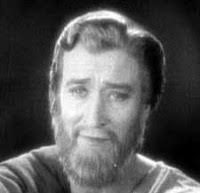
H.B. Warner was 52 years old when he made the original version.
The motion picture was produced by Samuel Bronson. Bronson had already made 1959's "John Paul Jones" and would be releasing two months after the "King of Kings" "El Cid". His future projects included 1963's "55 Days at Peking" and in 1964 "The Fall of the Roman Empire" and "Circus World".
"King of Kings" was directed by Nicholas Ray who made such classics as 1949's "Knock on Any Door", 1954's "Johnny Guitar" and 1955 "Rebel Without a Cause".
The screenplay was by both Phillip Yordan 1954's "Johnny Guitar", 1956's "The Harder They Fall" and 1958's "The Bravados" along with an un-credited Ray Bradbury.


Unlike Cecil B. DeMille's "King of Kings" this film attempts to tell the entire life of Jesus from his birth. The film differs very much from the New Testament and two examples are Harry Guardino's Barabbas is not a thief, but the man behind a Jewish uprising against Pilate. Setting up a reason for the populace to possibly want to let him live. While Rip Torn's Judas is one of Barabbas' rebels and leaves them to follow Jesus. In short the writers have Jesus directly involved in the politics of the period.

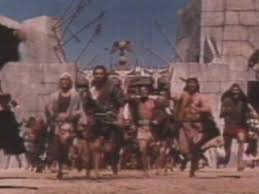
Robert Ryan was cast as John the Baptist and the film has Herod Antipas reluctantly behead him at the whim of his step daughter Salome. Salome unlike Rita Hayworth's version hates the Baptist and this will be her revenge. Antipas is portrayed as having sexual feelings about his step daughter and will do anything to win her favor.
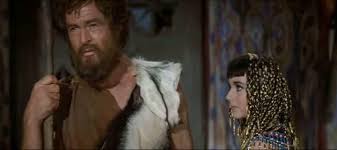

The film has Pilate, Herod Antipas and the Jewish High Priest Calaphas are shown as all fearing Jesus and his "miracles". At this point in the motion picture's script Barabbas plans a revolt against Pilate over the Passover Holiday as Jesus enters Jerusalem bringing everything to a head.

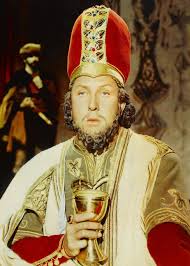

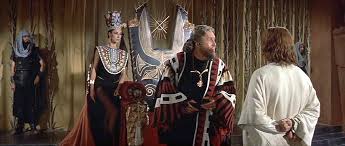
Leading to the Crucifixion the writers have a political came played between Herod Antipas and Pilate with Jesus as the pawn. After "The Last Supper" Pilate decides to arrest Jesus as he has Barabbas. Pilate in a political move puts the decision about Jesus' life into the hands of the people who want surprisingly to Pilate Barabbas released. Pilate again for his political future agree and Jesus is condemned to death.
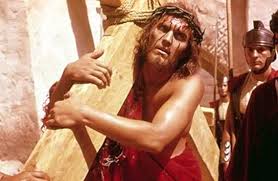
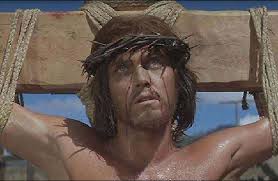
As with The Christian Science Monitor the film received negative reviews by most sources.
Bosley Crowther in the "New York Times" wrote:
The next movie has to be considered is a true "Hollywood" Epic on the life of Jesus. It also has a reputation of being boring and overly long. The motion picture was "The Greatest Story Ever Told".

The above poster was for the original roadshow engagement of the motion picture. Playing Jesus in this film was Swedish actor Max von Sydow. A fact which brings me back to the age controversy over Jeffrey Hunter in the same role. At the time this motion was filmed, 1965, Max von Sydow was 35 years old.The Christian Science Monitor this time actually wrote that Sydow was too old to play Jesus Christ.
Now using that religious newspaper's logic consider this:
In 1961 34 years of age was too young to play Jesus. While four years later in 1965 35 years of age was too old to play Jesus. So what age between 34 and 35 is the correct one for an actor to portray Jesus Christ according to The Christian Science Monitor?

"The Greatest Story Ever Told" was produced and directed by George Stevens the Oscar winner for "Giant" and the director of "Shane", "A Place in the Sun" and 1959's "The Diary of Anne Frank". For this film and the first time since he started in the motion picture industry in 1930. George Stevens is also credited as the pictures main screenwriter. Like 1961's "King of Kings" the movie covers the life of Jesus from his birth through resurrection.
However, what the film is really notable for is not George Stevens' screenplay, but its large star studded ensemble cast of 38 Hollywood actors. Some of them were cast in major roles such as Charlton Heston playing John the Baptist, Claude Rains in his last motion picture was Herod "the Great", Jose Ferrer was seen in the role of Herod Antipas his son and Telly Savalas portrayed Pontius Pilate. Then there were many cameo walk-on's by the likes of Sidney Poitier, Shelley Winters, Carroll Baker and Pat Boone. All 38 actors were a bigger audience draw to the film than the "Passion Play" Stevens meant it to be.
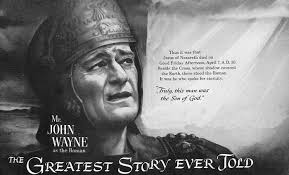
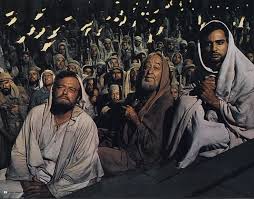


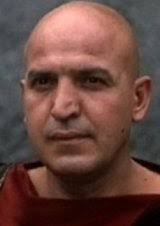
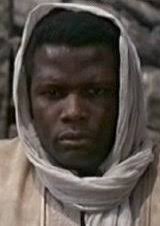
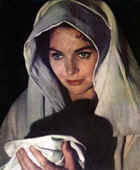
George Stevens has stated:
This was in response to reviews such as these:
New York Magazine:
The budget for the motion picture was $21 million dollars and it grossed World Wide only $15,473,333. A loss of $5,526.667.
Concerning its running time this depiction of the life of Jesus initially ran 4 hours and 20 minutes for that "Exclusive Limited Engagement" the above poster announced. The first cut was reduced in time by United Artists to 3 hours 58 minutes as requested for the "Exclusive Opening" in the United Kingdom, but even that shorten version was revised to 3 hours 17 minutes before actually opening in the U.K.. However, the most telling of all was that after that 4 hour and 20 minute opening in the United States. When the movie was released by United Artists for general theater runs in the United States at the request of Theater Owners. George Stevens' "The Greatest Story Ever Told" only ran 2 hours and 17 minutes. Just seen minutes longer than half the total running time of the Director's Cut original released.

The motion picture almost ends with the scene below.

Off to the left is a lone Roman soldier played in this cameo by John Wayne. Wayne delivers what Stevens thought would be a moving statement while looking up at the cross:
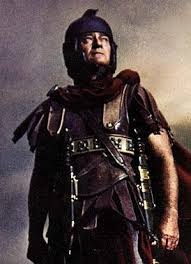
"The Greatest Story Ever Told" was to become the last true Hollywood Biblical Epic made. There are many Christian films from different groups on the life of Jesus and the Old and New Testaments, but as I stated at the start this article.I base it upon how Hollywood remade the Bible's many stories..
I am acknowledging Director/Actor Mel Gibson's 2004 "The Passion of the Christ" which tells of the final 12 hours of his life. The motion picture is not in the style of the old Hollywood filmmakers I am,writing about, but is a very personal film for its creator. That simple fact merits this picture being mentioned. This movies creation does mirror the motivation for George Stevens "The Greatest Story Ever Told".
CHRISTIANS, ROMANS AND PAUL NEWMAN
This section is about Hollywood movies not based upon the Bible directly, but Christian persecution by Rome.
Previously I mentioned the 1907 version of Lew Wallace's classic novel "Ben Hur" and that film's impact upon copyrighted material being used by the movie industry. Moving forward to 1925 finds MGM making the next filmed version of the novel.

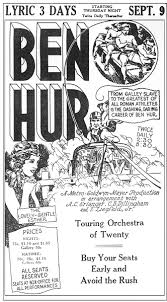
While serving as the Territorial Governor of New Mexico during the "Lincoln County War" between rival ranchers. A small event that became famous because of the names of some of its participants. Which included John Chisum, Pat Garrick and William H, Bonney aka: "Billy the Kid" that ex-Union General Lew Wallace wrote "Ben Hur: A Tale of the Christ".
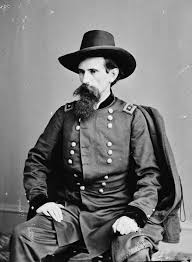
General Lew Wallace during the Civil War
This adaptation of the novel tells the story of two friends Raymond Navarro as Judah Ben Hur a rich Jewish merchant and his boyhood friend of the Roman Tribune Messala played by Francis X. Bushman,
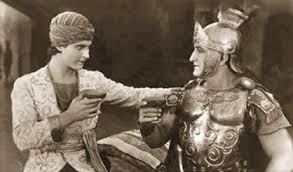

Their relationship changes after an accident occurs and Judah's family become criminals under Roman Law and condemned by Messala. Who has the family separated by sending Judah to the Roman galley's. The ship Ben Hur is chained to the oars upon is attacked by Pirates. Judah saves a Roman Admiral from drowning and the Admiral starts to treat him as the son he never had.





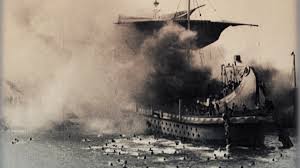
All of this is the build up for the famous Chariot Race sequence of the novel. During that race Judah is pitted against Messala who is injured, but does not die as in the 1959 remake. After the race Judah Ben Hur is reunited with his mother and sister who are now lepers, The two are cured by Jesus whom Judah recognizes as the man who gave him a cup of water while chained to other prisoners on the way to the galley's.
Here are two behind the scenes stills showing the photographing of the Chariot Race in 1925.
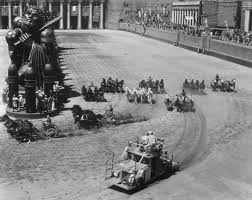
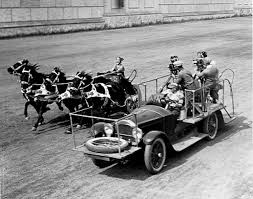
Scenes of the race itself.
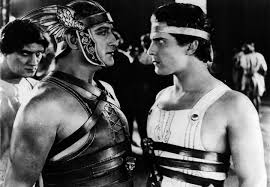

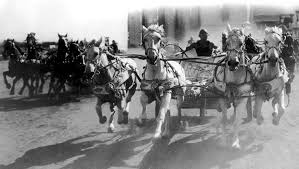
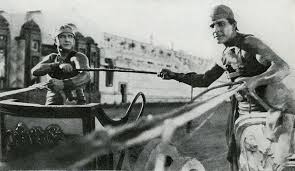


Two strip technicolor was used in the scenes involving Jesus The color footage was thought lost, but found in a Czech film archive for restoration.
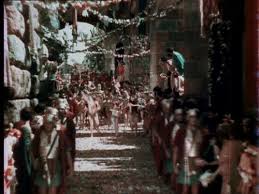
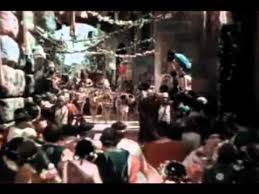
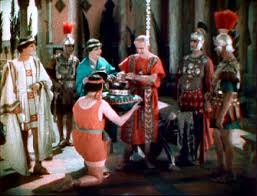

Attempting to get large audiences for the motion picture the MGM Publicity Department used the following Tag Lines among others:
Among those as extra's in the Colosseum for the Chariot Race where: John and Lionel Barrymore, Joan Crawford, Marion Davies the actress girlfriend of William Randolph Hearst, Douglas Fairbanks and his wife Mary Pickford, Dorthy and Lillian Gish, Samuel Goldman the "G" in MGM and Sid Grauman whose Chinese Theater I mentioned above. The filming of the race was considered a major film industry event,
Of note is that one of the Assistant Directors for the technicolor sequences was William Wyler who is my transition to the 1959 version of "Ben Hur". A motion picture he directed and received the Oscar, Playing Judah Ben Hur in Wyler's motion picture was Charlton Heston who also received an Oscar and as Messalla Irish actor Stephen Boyd.
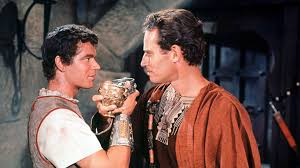
I mentioned the Publicity Campaign for the 1925 version, The total marketing budget spent on Wyler's film was $14.7 million dollars just below the actual film budget figure of $15,7 million dollars doubling the minimal amount needed to be recouped from the gross. However, that wouldn't be the worry it seemed as the film would gross $146.9 million dollars on its initial release and become the second highest grossing film just behind 1939's "Gone With the Wind" from 20 years earlier.
The motion picture's story line with the exception that Messalla is killed in the Chariot Race follows the original MGM script from 1925, but is expanded upon. Once again it is that Chariot Race that was the audience grabber over the stars and that race was almost a scene by scene remake of the 1925 motion picture. In fact with Wyler having been on the earlier motion picture there are several other scene set ups the same as in 1925.
The "accident" in this this film happens when some loose tiles fall from Ben Hur's home spooking the new Governor of Judea's horse which throws him. Messalla sees the tiles falling, but to gain favor accuses his boyhood friend of deliberately causing them to fall. Judah Ben Hur is sentenced to the galley's. Where he again saves the Admiral in this film played by Jack Hawkins.
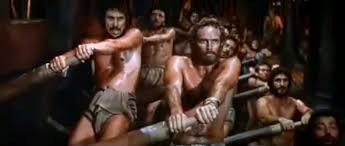

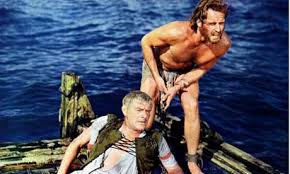
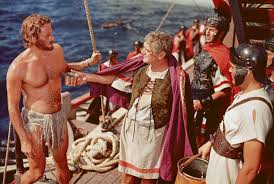
The Chariot Race itself was spectacular and training both Heston and Boyd was Stunt Man Yakima Canutt. An historically inaccurate parade was added to the opening for the race to give the audience a sense of spectacle by William Wyler.

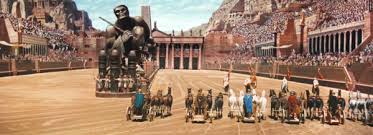

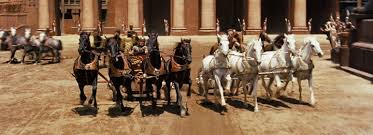
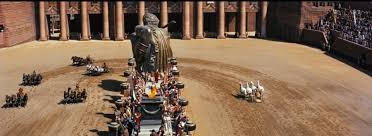

One million, one hundred thousand feet of film was shot for this Biblical Epic. The original cut of the motion picture ran Four Hours and a Half Hours long, but was edited to a running time of Three Hours and Forty-two minutes which equaled only 19,000 feet of film making it one minute longer than Cecil B/ DeMille's 1956 "The Ten Commandments" in its road show version.
The ending of course is the same as Judah discovers his mother and sister are lepers and in a rain washing across the face of Jesus on the cross they are cured.

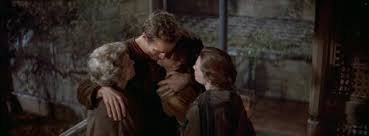
Let me move back in time to 1932 and Cecil B. DeMille for one last time. The film was "The Sign of the Cross" and finishes DeMille's "Biblical" Trilogy started in 1923 with his original "The Ten Commandments".
The film is about Christian persecution under Emperor Nero. Playing Nero was Charles Laughton and Claudette Colbert was his wife the Empress Poppaea, First billing on the motion picture went to Frederick March who played Marcus Superbus, perfect of Rome.


The basic story line for the film is described by the website "Rotten Tomatoes":
This was Cecil B. DeMille at his Biblical best creating decadent Rome under Nero and weaving a love story of an innocent Christian girl, Landi, and Pagan Roman, March, falling in love with each other. Should the plot sound similar to the 1885 novel "Quo Vadis" by Polish author Henryk Sienkiewicz you are correct. As "The Sign of the Cross" was a play by British play by actor Wilson Barrett who borrowed heavily from the other work.
The film is considered a "Pre-Code" motion picture, because even though the new "Motion Picture Production Code" came out in 1930. It wasn't until 1934 that it actually began to be enforced by Will H. Hayes through what would be forever known to the motion picture industry as "The Hayes Office".
At the time of its release in 1932 the film was very popular with the public, but two years later this specific film along with the 1933 "Pre-code" motion picture "Ann Vickers" starring Irene Dunne and Walter Huston led to the formation of "The Catholic League of Decency" to protect the morality of the American viewing public,
So what could be so bad in a "Biblical" Historical motion picture telling of the conversion to Christianity of a Roman Soldier that would create "The Catholic League of Decency"? Additionally when it was to be re-released in 1938 having several sequences censored by "The Hayes Office"?
The most famous censored sequence is of Claudette Colbert in the role of Empress Poppaea taking a milk bath. It was very obvious that she was totally naked and most of her body was visible at one time, or another as she moved around the tub. Although these four stills are not as revealing. They do give my reader an idea of the entire milk bath sequence.


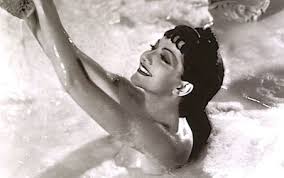

Another sequence was the lesbian "Dance of the Naked Moon" used to seduce Elissa Landi's character of Mercia.

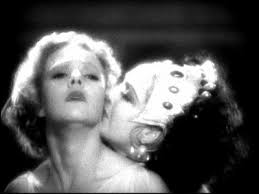
Then there were footage of gladiators being ruthlessly killed and scenes like the one below involving semi-naked women, Landi once more in these two, and animals. In this case this is suppose to be a real gorilla, but as normal for the movies at that time a man in a very bad gorilla suit.


DeMille knew how to sell Christian persecution at the hands of the Romans in the name of the Bible..
It wouldn't be until 1993 when these sequences would be restored to the motion picture.


Moving on to 1951 we have the actual film based upon Henryk Sienkiewicz's novel "Quo Vadis" (Latin for: Where are you going?) starring Robert Taylor and Deborah Kerr.


Robert Taylor plays Roman prefect Marcus Vinicius and Deborah Kerr plays a Nobel who is actually a devout Christian named Lygia. Of note to film buffs is that when the film was originally cast Gregory Peck was to have played Vinicius and Elizabeth Taylor Lygia in 1949, but the production changed hands and they were dropped from the parts, Although an uncredited Elizabeth Taylor was one of the Christian's in the arena sequence. See if you can pick her out.
Emperor Nero was portrayed by Peter Ustinov in a great over the top performance especially when Rome burns.
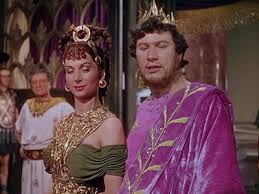
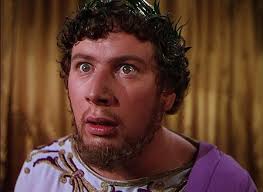
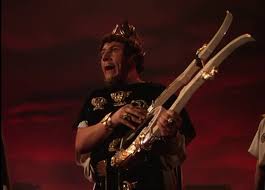
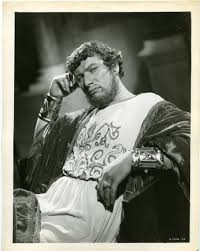
Patricia Laffan played Poppaea and Leo Glenn plays Marcus' uncle Petronius who is also Nero's most trusted adviser.
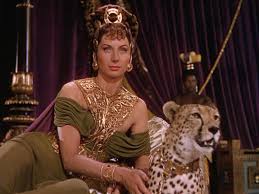

The plot immediately becomes familiar for anyone having seen DeMille's "The Sign of the Cross", or have read the original novel. Roman Commander Marcus Vinicius returns victoriously to Rome and meets and falls in love to the Christian girl Lygia. However, he does not understand her religion and becomes conflicted as his love for her deepens.
While this is going on Nero is plotting the destruction of Rome which he believes will give him Immortality and his wife on the other hand lusts for Marcus.
Lygia brings Marcus to meet Peter played by Finlay Currie who helps Marcus understand Christianity and move closer to it. Nero goes ahead with his plan and burns Rome and blames the Christians. Lygia is arrested and after attempting to save her Marcus is imprisoned with the Christians. In prison Peter having had a sign from God marries the couple. The future Saint Peter is taken by Nero's soldiers and crucified upside down.

Poppaea attempts to get her revenge on Marcus by having him tied in the area to the spectators box. While Lygia is tied to the stake in the arena and her body guard Ursus, wrestler Buddy Baer, must kill a wild bull with his bare hands to save her. He succeeds by breaking the bulls neck. The crowd demands their freedom, but Nero refuses.The crowd now realizes that it was Nero not the Christians that burned Rome as Marcus breaks free from his bonds.Nero attempts to stop Marcus, but Marcus' loyal troops come to his aide.

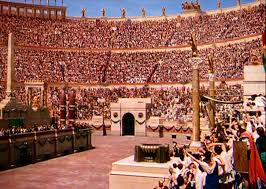
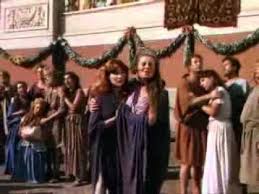

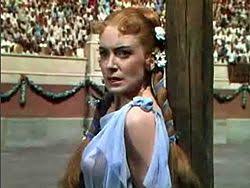
Marcus reveals to the crowd that General Galba is marching on Rome to replace Nero. Marcus, Lygia and Ursus are freed to leave Rome as they walk away the trio notices Peter's staff which was left by the roadside. The motion picture ends with the staff having sprouted flowers and there is a glow around them. As the trio hear these words seemingly coming from the glow: "I am the way, the truth, and the life." and the film fades to black.
This Biblical epic had a budget of $7,623,000 and made in its initial 1951 run $21,300,000.
Two years later another film about the persecution of Christians by Rome would open "The Robe". The motion picture was based on the novel Lloyd C. Douglas wrote prior to "The Big Fisherman" The film was a star studded big budgeted 20th Century Fox production and the ad campaign pushed the fact the film was the first in the new process "CinemaScope".
Short history: in 1930 Fox made the first American 70 mm motion picture a Western directed by "One Eyed" Raul Walsh. The process was called "Grandeur", but required both a larger screen and a special projector to show it. So the movie was shot at the same time in 35 mm for general release. The "Grandeur" process was shelved until this film and renamed "CinemaScope". Although a larger screen was still required the new named process only required the changing of the projection lens to make it work. However, "The Big Trail" is remembered more for its newly named star John Wayne than its 70 mm process.
The screenplay was by Golden Age of Radio writer Norman Corwin who wrote the Academy Award nominated screenplay for the Vincente Minnelli/Kirk Douglas film about Van Gogh 1956's "Lust for Life" based upon the Irving Stone novel. Corwin created a back story for Ruth, played by Israeli actress Elana Eden, as a pagan idolatress who after seeing a young girl sacrificed has conflicts with her life. She falls in love with a Moabite man named Mahlon, played by Tom Tryon, However, Mahlon along with his family are condemned to the mines. Ruth and Mahlon attempt an escape but he is wounded and just before he dies they are married.
At this point the motion pictures starts to follow "The Book of Ruth" as Ruth meets the other widows Naomi, Peggy Wood, and Orpah, Ziva Rodann. There follows more trials for Ruth and finally she will marry Boaz played by Stuart Whitman. The movie closes as the final verses from "The Book of Ruth" are actually read.
As you can tell the tone is very different from those I have already mentioned. The motion picture was very popular at the time with Christian groups and reviewers, because of that tone. In the United States rentals of 16 mm prints of "The Story of Ruth" to church groups had recovered the total budget by January 4, 1961, or less than seven months after its release.
Describing the performance of Elana Eden:
Variety said:
a performance of dignity," as she projects "an inner strength through a delicate veneer.Carl Lane of the St, Petersburg, Flordia "Evening Independent" stated:
a flesh and blood Ruth of passion and compassion, of tenderness and dignity, a woman of whom the viewer tells himself on leaving the theater: 'This is Ruth as she must have been. She could have been no other.
As to the overall motion picture Variety wrote;
a refreshingly sincere and restrained Biblical drama, a picture that elaborates on the romantic, political and devotional difficulties encountered by the Old Testament heroineThe other heroic women from the Old Testament I want to mention was Esther and the film also from 1960 followed "The Story of Ruth" as "Esther and the King" and deals with the events surrounding the Jewish Holiday of Purim. However, with a very different tone and more spectacle than the former. The film was another Italian/American co-production by director/screen writer Raul Walsh starring Richard Egan and Joan Collins.

To begin with the film actually is titled "Ester e il re" as the majority of the funding was from Italian Production Companies "Galatea Film" and "Titanus". Although director "One Eyed" Raul Walsh is given full screen credit as Producer. For those who love Italian Horror films the co-director of "the Italian segments" was Mario Bava. However, Mario Bava was the movies Cinematographer and to see his work alone makes this film special. There was also a controversy mainly in Italy over how much of the film was actually directed by Walsh and not Bava. Raul Walsh would direct only two more films after "Esther and the King".
The look of the motion picture can be described as a true Biblical-Peplum (Sword and Sandal) Italian movie. I fondly remember it. Just watch the opening credits and they are almost totally Italian names, but as this was Walsh's film I include it as a "Hollywood" Biblical motion picture and especially for the comparison with "The Story of Ruth",
The four main characters tied to the story of Purim are Joan Collins as Esther, Richard Egan as King Ashasuerus, Irish actor Denis O'Dea as Mordecai and Italian actor Sergio Fantoni, best known to American audiences for "Von Ryan's Express", as Haman.
Rotten Tomatoes described the film this way:
Just over a decade before she would gain fame and some fortune as Alexis Carrington in television's Dynasty series, Joan Collins starred as Esther in this melodramatic, routine Biblical story. The setting is Persia in the 4th century BC, as Esther comes to the attention of the recently widowed King Ahasuerus. The king has been trying to stifle and defeat the campaign of hatred fomented against the Jews by his evil minister Haman (Sergio Fantoni). Before the King can pair off with Esther and defeat the villainous Haman, there are several intervening adventures and an additional, attractive woman who competes for attention.
Here's a YouTube link to the full movie.
https://www.youtube.com/watch?v=SQ6qYypfmIo
PASSION PLAYS
In 1927 Cecil B. DeMille made what is considered the second film in his "Biblical" Trilogy "King of Kings".
DeMille opened this motion picture and closed it using the new two strip technicolor process. Otherwise the film was shot in black and white.
The motion picture tells of the last days of Jesus Christ played by actor H.B. Warner. 29 years later Warner would be part of the cast of DeMille's 1956 "The Ten Commandments".
The script for the motion picture was by Jeanie MacPherson. She had sought out Cecil B. DeMille in 1917 to continue her career as an actress, but he was well aware of MacPherson's writing skills and hired her as his chief screenplay writer. Starting with 1917's "A Romance of the Red Woods". Jeannie MacPherson would write 30 of DeMille's next 34 motion pictures including the 1923 "Ten Commandments"
Relaying on his established Biblical sex imagery Mary Magdalene is portrayed as a free spirited courtesan enjoying multiple men. In one sequence she learns that Judas, whom she is interested in, is meeting a carpenter other people are speaking about and Mary rides out in a chariot pulled by Zebras to see him. Near the movies ending DeMille uses a multiple exposure shot as Jesus casts out "The Seven Deadly Sins" which have been possessing the young woman all this time.
Above H.B. Warner as Jesus and William Boyd as "Simon of Cyrene". Who was said to have helped carry the cross. Boyd would start in 1935 playing the character of "Hopalong Cassidy" in the first of 66 motion pictures. He was able to purchase the rights to the film character and later he had a radio program in the early 1950's and released the Cassidy motion pictures to television as part of a weekly series.
Here are some of DeMille's two strip technicolor scenes the last two being the resurrection.
The Great Wall originally was made for "King of Kings". It was reused on Skull Island to keep the 1933 "King Kong" away from the natives.
Here are two photos of the world premier of "King of Kings" which was the first film to be shown at the new Grauman's Chinese Theater on Hollywood Boulevard May 18, 1927.
One last bit of trivia in the cast as an extra was future author Ayn Rand who met her husband, also an extra, Frank O'Connor on the set.
Now we move forward to October 1961. When the remake of "King of Kings" starring Jeffrey Hunter was released. In a film review at the time The Christian Science Monitor renamed the motion picture "I Was A Teenage Jesus". The reviewer thought Hunter was too young looking to play Jesus and as the last few years had seen such films as "I Was A Teenage Werewolf", "I Was A Teenage Frankenstein", "Teenagers from Outer Space" and "Teenage Cavemen" the new subtitle seemed to fit in the mind of the reviewer.
However, according to historians Jesus Christ was 33 years old when he died. Jeffrey Hunter was 34 years of age when he played him during the filming of the motion picture. According to The Christian Science Monitor Hunter was to young to play Jesus Christ.
H.B. Warner was 52 years old when he made the original version.
The motion picture was produced by Samuel Bronson. Bronson had already made 1959's "John Paul Jones" and would be releasing two months after the "King of Kings" "El Cid". His future projects included 1963's "55 Days at Peking" and in 1964 "The Fall of the Roman Empire" and "Circus World".
"King of Kings" was directed by Nicholas Ray who made such classics as 1949's "Knock on Any Door", 1954's "Johnny Guitar" and 1955 "Rebel Without a Cause".
The screenplay was by both Phillip Yordan 1954's "Johnny Guitar", 1956's "The Harder They Fall" and 1958's "The Bravados" along with an un-credited Ray Bradbury.
Unlike Cecil B. DeMille's "King of Kings" this film attempts to tell the entire life of Jesus from his birth. The film differs very much from the New Testament and two examples are Harry Guardino's Barabbas is not a thief, but the man behind a Jewish uprising against Pilate. Setting up a reason for the populace to possibly want to let him live. While Rip Torn's Judas is one of Barabbas' rebels and leaves them to follow Jesus. In short the writers have Jesus directly involved in the politics of the period.
Robert Ryan was cast as John the Baptist and the film has Herod Antipas reluctantly behead him at the whim of his step daughter Salome. Salome unlike Rita Hayworth's version hates the Baptist and this will be her revenge. Antipas is portrayed as having sexual feelings about his step daughter and will do anything to win her favor.
The film has Pilate, Herod Antipas and the Jewish High Priest Calaphas are shown as all fearing Jesus and his "miracles". At this point in the motion picture's script Barabbas plans a revolt against Pilate over the Passover Holiday as Jesus enters Jerusalem bringing everything to a head.
Leading to the Crucifixion the writers have a political came played between Herod Antipas and Pilate with Jesus as the pawn. After "The Last Supper" Pilate decides to arrest Jesus as he has Barabbas. Pilate in a political move puts the decision about Jesus' life into the hands of the people who want surprisingly to Pilate Barabbas released. Pilate again for his political future agree and Jesus is condemned to death.
As with The Christian Science Monitor the film received negative reviews by most sources.
Bosley Crowther in the "New York Times" wrote:
the nature of an illustrated lecture.....peculiarly impersonal film that constructs a great deal of random action around Jesus and does very little to construct a living personality for Him.Over the years though the picture has become a standard for both Easter and Christmas on television. Along with being shown throughout the year on different religious television networks, if one looks at the political scene in the United States and the World in 1961. Then the motion picture takes on another look altogether. Another distinction the film does have is that it was the first sound production actually showing the face of Jesus. Look at any film prior in the sound era and you will see shots from his back and the faces of those he is speaking too, but never his face.
The next movie has to be considered is a true "Hollywood" Epic on the life of Jesus. It also has a reputation of being boring and overly long. The motion picture was "The Greatest Story Ever Told".
The above poster was for the original roadshow engagement of the motion picture. Playing Jesus in this film was Swedish actor Max von Sydow. A fact which brings me back to the age controversy over Jeffrey Hunter in the same role. At the time this motion was filmed, 1965, Max von Sydow was 35 years old.The Christian Science Monitor this time actually wrote that Sydow was too old to play Jesus Christ.
Now using that religious newspaper's logic consider this:
In 1961 34 years of age was too young to play Jesus. While four years later in 1965 35 years of age was too old to play Jesus. So what age between 34 and 35 is the correct one for an actor to portray Jesus Christ according to The Christian Science Monitor?
"The Greatest Story Ever Told" was produced and directed by George Stevens the Oscar winner for "Giant" and the director of "Shane", "A Place in the Sun" and 1959's "The Diary of Anne Frank". For this film and the first time since he started in the motion picture industry in 1930. George Stevens is also credited as the pictures main screenwriter. Like 1961's "King of Kings" the movie covers the life of Jesus from his birth through resurrection.
However, what the film is really notable for is not George Stevens' screenplay, but its large star studded ensemble cast of 38 Hollywood actors. Some of them were cast in major roles such as Charlton Heston playing John the Baptist, Claude Rains in his last motion picture was Herod "the Great", Jose Ferrer was seen in the role of Herod Antipas his son and Telly Savalas portrayed Pontius Pilate. Then there were many cameo walk-on's by the likes of Sidney Poitier, Shelley Winters, Carroll Baker and Pat Boone. All 38 actors were a bigger audience draw to the film than the "Passion Play" Stevens meant it to be.
George Stevens has stated:
I have tremendous satisfaction that the job has been done – to its completion – the way I wanted it done; the way I know it should have been done. It belongs to the audiences now…and I prefer to let them judge
This was in response to reviews such as these:
New York Magazine:
God is unlucky in The Greatest Story Ever Told. His only begotten son turns out to be a bore.The New Yorker:
If the subject matter weren't sacred in the original, we would be responding to the picture in the most charitable way possible by laughing at it from start to finish; this Christian mercy being denied us, we can only sit and sullenly marvel at the energy for which, for more than four hours, the note of serene vulgarity is triumphantly sustained,New York Times:
The most distracting nonsense is the pop-up of familiar faces in so-called cameo roles, jarring the illusion.
The budget for the motion picture was $21 million dollars and it grossed World Wide only $15,473,333. A loss of $5,526.667.
Concerning its running time this depiction of the life of Jesus initially ran 4 hours and 20 minutes for that "Exclusive Limited Engagement" the above poster announced. The first cut was reduced in time by United Artists to 3 hours 58 minutes as requested for the "Exclusive Opening" in the United Kingdom, but even that shorten version was revised to 3 hours 17 minutes before actually opening in the U.K.. However, the most telling of all was that after that 4 hour and 20 minute opening in the United States. When the movie was released by United Artists for general theater runs in the United States at the request of Theater Owners. George Stevens' "The Greatest Story Ever Told" only ran 2 hours and 17 minutes. Just seen minutes longer than half the total running time of the Director's Cut original released.
The motion picture almost ends with the scene below.
Off to the left is a lone Roman soldier played in this cameo by John Wayne. Wayne delivers what Stevens thought would be a moving statement while looking up at the cross:
"Truly this man was the Son of God."Two things ruined it for Stevens. One was the unmistakable voice of John Wayne playing a Roman and the other the laughs people were actually having over Wayne in a "skirt". Part of the proper attire for a soldier of Rome at the time.
"The Greatest Story Ever Told" was to become the last true Hollywood Biblical Epic made. There are many Christian films from different groups on the life of Jesus and the Old and New Testaments, but as I stated at the start this article.I base it upon how Hollywood remade the Bible's many stories..
I am acknowledging Director/Actor Mel Gibson's 2004 "The Passion of the Christ" which tells of the final 12 hours of his life. The motion picture is not in the style of the old Hollywood filmmakers I am,writing about, but is a very personal film for its creator. That simple fact merits this picture being mentioned. This movies creation does mirror the motivation for George Stevens "The Greatest Story Ever Told".
CHRISTIANS, ROMANS AND PAUL NEWMAN
This section is about Hollywood movies not based upon the Bible directly, but Christian persecution by Rome.
Previously I mentioned the 1907 version of Lew Wallace's classic novel "Ben Hur" and that film's impact upon copyrighted material being used by the movie industry. Moving forward to 1925 finds MGM making the next filmed version of the novel.

While serving as the Territorial Governor of New Mexico during the "Lincoln County War" between rival ranchers. A small event that became famous because of the names of some of its participants. Which included John Chisum, Pat Garrick and William H, Bonney aka: "Billy the Kid" that ex-Union General Lew Wallace wrote "Ben Hur: A Tale of the Christ".
General Lew Wallace during the Civil War
This adaptation of the novel tells the story of two friends Raymond Navarro as Judah Ben Hur a rich Jewish merchant and his boyhood friend of the Roman Tribune Messala played by Francis X. Bushman,
Their relationship changes after an accident occurs and Judah's family become criminals under Roman Law and condemned by Messala. Who has the family separated by sending Judah to the Roman galley's. The ship Ben Hur is chained to the oars upon is attacked by Pirates. Judah saves a Roman Admiral from drowning and the Admiral starts to treat him as the son he never had.
All of this is the build up for the famous Chariot Race sequence of the novel. During that race Judah is pitted against Messala who is injured, but does not die as in the 1959 remake. After the race Judah Ben Hur is reunited with his mother and sister who are now lepers, The two are cured by Jesus whom Judah recognizes as the man who gave him a cup of water while chained to other prisoners on the way to the galley's.
Here are two behind the scenes stills showing the photographing of the Chariot Race in 1925.
Scenes of the race itself.
Two strip technicolor was used in the scenes involving Jesus The color footage was thought lost, but found in a Czech film archive for restoration.
Attempting to get large audiences for the motion picture the MGM Publicity Department used the following Tag Lines among others:
The Picture Every Christian Ought to See.
The Supreme Motion Picture Masterpiece of All TimeHowever, this did not work and the picture had an overall loss of $698,000 in 1925 dollars from a budget that ended up being $3,697,000. Part of the budget overall came from the 200,000 feet of film shot for the Chariot Race which was edited down to only 750 feet seen in the motion picture, but the race is thrilling even today.
Among those as extra's in the Colosseum for the Chariot Race where: John and Lionel Barrymore, Joan Crawford, Marion Davies the actress girlfriend of William Randolph Hearst, Douglas Fairbanks and his wife Mary Pickford, Dorthy and Lillian Gish, Samuel Goldman the "G" in MGM and Sid Grauman whose Chinese Theater I mentioned above. The filming of the race was considered a major film industry event,
Of note is that one of the Assistant Directors for the technicolor sequences was William Wyler who is my transition to the 1959 version of "Ben Hur". A motion picture he directed and received the Oscar, Playing Judah Ben Hur in Wyler's motion picture was Charlton Heston who also received an Oscar and as Messalla Irish actor Stephen Boyd.
I mentioned the Publicity Campaign for the 1925 version, The total marketing budget spent on Wyler's film was $14.7 million dollars just below the actual film budget figure of $15,7 million dollars doubling the minimal amount needed to be recouped from the gross. However, that wouldn't be the worry it seemed as the film would gross $146.9 million dollars on its initial release and become the second highest grossing film just behind 1939's "Gone With the Wind" from 20 years earlier.
The motion picture's story line with the exception that Messalla is killed in the Chariot Race follows the original MGM script from 1925, but is expanded upon. Once again it is that Chariot Race that was the audience grabber over the stars and that race was almost a scene by scene remake of the 1925 motion picture. In fact with Wyler having been on the earlier motion picture there are several other scene set ups the same as in 1925.
The "accident" in this this film happens when some loose tiles fall from Ben Hur's home spooking the new Governor of Judea's horse which throws him. Messalla sees the tiles falling, but to gain favor accuses his boyhood friend of deliberately causing them to fall. Judah Ben Hur is sentenced to the galley's. Where he again saves the Admiral in this film played by Jack Hawkins.
The Chariot Race itself was spectacular and training both Heston and Boyd was Stunt Man Yakima Canutt. An historically inaccurate parade was added to the opening for the race to give the audience a sense of spectacle by William Wyler.
One million, one hundred thousand feet of film was shot for this Biblical Epic. The original cut of the motion picture ran Four Hours and a Half Hours long, but was edited to a running time of Three Hours and Forty-two minutes which equaled only 19,000 feet of film making it one minute longer than Cecil B/ DeMille's 1956 "The Ten Commandments" in its road show version.
The ending of course is the same as Judah discovers his mother and sister are lepers and in a rain washing across the face of Jesus on the cross they are cured.
Let me move back in time to 1932 and Cecil B. DeMille for one last time. The film was "The Sign of the Cross" and finishes DeMille's "Biblical" Trilogy started in 1923 with his original "The Ten Commandments".
The film is about Christian persecution under Emperor Nero. Playing Nero was Charles Laughton and Claudette Colbert was his wife the Empress Poppaea, First billing on the motion picture went to Frederick March who played Marcus Superbus, perfect of Rome.

The basic story line for the film is described by the website "Rotten Tomatoes":
After Emperor Nero (Charles Laughton) blames the Christians for burning Rome, he orders that they be sent to the Colosseum. While rounding them up, military leader Marcus Superbus (Fredric March) meets pretty young Mercia (Elissa Landi), who begs him to free her stepfather, Titus (Arthur Hohl). Marcus does so with the hope of seducing her but is unsuccessful. Empress Poppaea (Claudette Colbert), who has her eye on Marcus, soon learns of Mercia and, out of jealousy, orders her fed to the lions.
This was Cecil B. DeMille at his Biblical best creating decadent Rome under Nero and weaving a love story of an innocent Christian girl, Landi, and Pagan Roman, March, falling in love with each other. Should the plot sound similar to the 1885 novel "Quo Vadis" by Polish author Henryk Sienkiewicz you are correct. As "The Sign of the Cross" was a play by British play by actor Wilson Barrett who borrowed heavily from the other work.
The film is considered a "Pre-Code" motion picture, because even though the new "Motion Picture Production Code" came out in 1930. It wasn't until 1934 that it actually began to be enforced by Will H. Hayes through what would be forever known to the motion picture industry as "The Hayes Office".
At the time of its release in 1932 the film was very popular with the public, but two years later this specific film along with the 1933 "Pre-code" motion picture "Ann Vickers" starring Irene Dunne and Walter Huston led to the formation of "The Catholic League of Decency" to protect the morality of the American viewing public,
So what could be so bad in a "Biblical" Historical motion picture telling of the conversion to Christianity of a Roman Soldier that would create "The Catholic League of Decency"? Additionally when it was to be re-released in 1938 having several sequences censored by "The Hayes Office"?
The most famous censored sequence is of Claudette Colbert in the role of Empress Poppaea taking a milk bath. It was very obvious that she was totally naked and most of her body was visible at one time, or another as she moved around the tub. Although these four stills are not as revealing. They do give my reader an idea of the entire milk bath sequence.
Another sequence was the lesbian "Dance of the Naked Moon" used to seduce Elissa Landi's character of Mercia.
Then there were footage of gladiators being ruthlessly killed and scenes like the one below involving semi-naked women, Landi once more in these two, and animals. In this case this is suppose to be a real gorilla, but as normal for the movies at that time a man in a very bad gorilla suit.
DeMille knew how to sell Christian persecution at the hands of the Romans in the name of the Bible..
It wouldn't be until 1993 when these sequences would be restored to the motion picture.
Moving on to 1951 we have the actual film based upon Henryk Sienkiewicz's novel "Quo Vadis" (Latin for: Where are you going?) starring Robert Taylor and Deborah Kerr.
Robert Taylor plays Roman prefect Marcus Vinicius and Deborah Kerr plays a Nobel who is actually a devout Christian named Lygia. Of note to film buffs is that when the film was originally cast Gregory Peck was to have played Vinicius and Elizabeth Taylor Lygia in 1949, but the production changed hands and they were dropped from the parts, Although an uncredited Elizabeth Taylor was one of the Christian's in the arena sequence. See if you can pick her out.
Emperor Nero was portrayed by Peter Ustinov in a great over the top performance especially when Rome burns.
Patricia Laffan played Poppaea and Leo Glenn plays Marcus' uncle Petronius who is also Nero's most trusted adviser.
The plot immediately becomes familiar for anyone having seen DeMille's "The Sign of the Cross", or have read the original novel. Roman Commander Marcus Vinicius returns victoriously to Rome and meets and falls in love to the Christian girl Lygia. However, he does not understand her religion and becomes conflicted as his love for her deepens.
While this is going on Nero is plotting the destruction of Rome which he believes will give him Immortality and his wife on the other hand lusts for Marcus.
Lygia brings Marcus to meet Peter played by Finlay Currie who helps Marcus understand Christianity and move closer to it. Nero goes ahead with his plan and burns Rome and blames the Christians. Lygia is arrested and after attempting to save her Marcus is imprisoned with the Christians. In prison Peter having had a sign from God marries the couple. The future Saint Peter is taken by Nero's soldiers and crucified upside down.
Poppaea attempts to get her revenge on Marcus by having him tied in the area to the spectators box. While Lygia is tied to the stake in the arena and her body guard Ursus, wrestler Buddy Baer, must kill a wild bull with his bare hands to save her. He succeeds by breaking the bulls neck. The crowd demands their freedom, but Nero refuses.The crowd now realizes that it was Nero not the Christians that burned Rome as Marcus breaks free from his bonds.Nero attempts to stop Marcus, but Marcus' loyal troops come to his aide.
Marcus reveals to the crowd that General Galba is marching on Rome to replace Nero. Marcus, Lygia and Ursus are freed to leave Rome as they walk away the trio notices Peter's staff which was left by the roadside. The motion picture ends with the staff having sprouted flowers and there is a glow around them. As the trio hear these words seemingly coming from the glow: "I am the way, the truth, and the life." and the film fades to black.
This Biblical epic had a budget of $7,623,000 and made in its initial 1951 run $21,300,000.
Two years later another film about the persecution of Christians by Rome would open "The Robe". The motion picture was based on the novel Lloyd C. Douglas wrote prior to "The Big Fisherman" The film was a star studded big budgeted 20th Century Fox production and the ad campaign pushed the fact the film was the first in the new process "CinemaScope".
Short history: in 1930 Fox made the first American 70 mm motion picture a Western directed by "One Eyed" Raul Walsh. The process was called "Grandeur", but required both a larger screen and a special projector to show it. So the movie was shot at the same time in 35 mm for general release. The "Grandeur" process was shelved until this film and renamed "CinemaScope". Although a larger screen was still required the new named process only required the changing of the projection lens to make it work. However, "The Big Trail" is remembered more for its newly named star John Wayne than its 70 mm process.
.
The motion picture starred Richard Burton as Marcellus Gallo, Jean Simmons as Diana, Victor Mature as Demetrius, Michael Rennie as Peter, Richard Boone as Pontius Pilate, Jeff Morrow as Paulus, Michael Ansara as Judas and scene stealing Jay Robinson as Caligula.


When asked why he wrote "The Robe" Lloyd C. Douglas replied it was his answer to what happened to the Roman soldier that won the Robe worn by Jesus at the Crucifixion in a game of dice. Over the the length of the movie we watch Marcellus Gallo's change to Christianity and the people that are effected by that.
While in Roman the intrigue of the court revolves around the death of Emperor Tiberius and the rise of the mad Emperor Caligula.
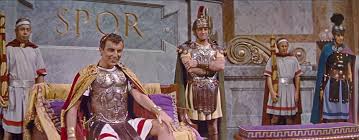
Another subplot revolved around the slave Demetrius who becomes Marcellus's servant. The motion picture ends with Caligula condemning Marcellus Gallo to death and Diana joining him after also converting to Christianity.
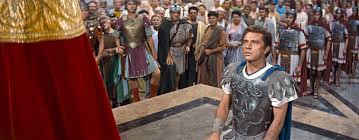
The film's budget was $4.1 million dollars and made $36 million in the United States alone.
"The Robe" was such a major success for 20th Century Fox at the time that the following year saw an original screenplay by Philip Dunne based upon characters created by Lloyd C. Douglas released to equal success. The budget for "Demetrius and the Gladiators" was only $1.99 million dollars, because all the sets from "The Robe" were available along with costumes, etc. The motion picture earned in the United States alone in its initial release $26 million dollars. Not bad for a religious sequel filled with sex.

The motion picture revolves around the freed slave Demetrius once more played by Victor Mature who holds the Robe of Jesus Christ. Michael Rennie returns as Peter, Jay Robinson as Caligula and added to the leads is Susan Hayward.

Susan Hayward plays the very sexual and evil Messalina and at one point gives the orders to separate Demetrius from his love Lucia, Debra Paget. That action inadvertently leads to her death at the hands of the gladiator Dardanius, Richard Egan, and the loss of his faith in Jesus by Demetrius.
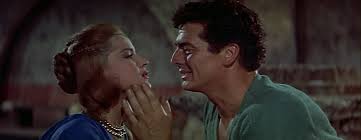
Demetrius becomes a gladiator and is trained by Strabo, Ernest Borgnine and will get his revenge on Dardanius while becoming a major hero of Rome in the arena. Leading him further away from the life he lived with Lucia.

Demetrius then falls for the seductions of Messalina who is unfaithful to her husband Claudius, Barry Jones, who is in line for the throne after Caligula.
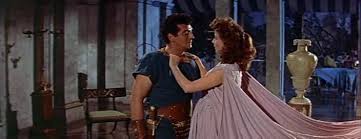
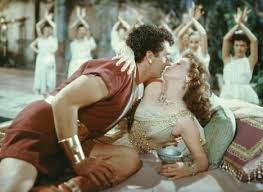
The film ends with the death of Caligula and the installing of Claudius, Barry Jones as Emperor and Messalina confirming her loyalty to her husband. Claudius admits to those assembled that he is not "A God" as the other Emperors have claimed and informs Demetrius to find Peter, Claudius further tells Demetrius to return the Robe taken by Caligula and inform Peter that as long as the Christians take no action against Rome. They have nothing to fear from him.
My last motion picture in this section has the distinction of being Paul Newman's first motion picture and one he hated with a passion. This Biblical (?) Epic was once described as:
"Paul Newman and the Holy Grail"
and is based upon an excellent novel by Thomas B, Costain and "The Silver Chalice". I wish the same could be said about the film.


The basic story is about a silver smith who is hired to make a chalice to hold the cup Jesus used at the last supper. Thomas B. Costain based his novel on the actual discovery of a silver chalice in Antioch. Which was identified as containing a interior cup that was the Holy Grail the cup Jesus used at the Last Supper.
Unlike the novel the movie goes completely haywire and laughable starting with all the different acting styles. Newman as the fictional Basil the silversmith was fresh out of Lee Strasberg's "Actor's Studio" and like Brando was a "method" actor.
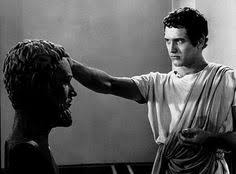
Next you had Jack Palance as "Simon Magus" (Latin for Simon the Magician, or Simon the Sorcerer) who is an actual historical figure, He was a Samaritan Magnus who converted to Christianity and was baptized by Philip the Evangelist. As usual Palance's acting style at the time was over the top and this probably makes him the most interesting character in this boring film.

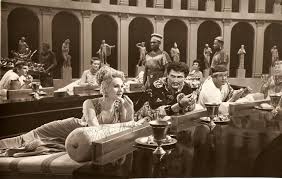
Virginia Mayo plays Helena the woman the Magnus uses to seduce Basil and through her control him.
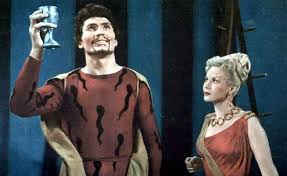
Italian actress Pier Angeli plays Deborra the true love of Basil, if only he will recognize it.
The sets were designed by Rolfe Gerard who seemed to combine 1930's Art Deco with Abstract Art forms added to come up with a setting that is anything like reality. Some of the costumes seemed to fit into modern dance and ballet. Note the one being worn by Jack Palance next to Virginia Mayo as he holds up a drinking cup. Add in the multiple styles of acting and this Biblical Epic based upon a classic novel was pure weirdness.
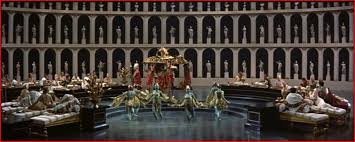
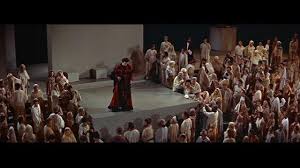
The movie was produced and directed by Victor Saville who had been making motion pictures since 1927 and he obviously had a certain vision. When the motion picture was to be shown on television in 1966 for the first time and in a black and white print. Paul Newman took out an Advertisement in one of the major Hollywood Trade Papers asking people not to watch at as he was embarrassed by his performance. The tactic backfired and the film got one of the highest ratings for in a long time on television.
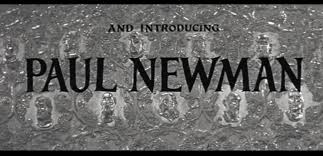
FADE TO BLACK AND RUN END TITLES.
The motion picture starred Richard Burton as Marcellus Gallo, Jean Simmons as Diana, Victor Mature as Demetrius, Michael Rennie as Peter, Richard Boone as Pontius Pilate, Jeff Morrow as Paulus, Michael Ansara as Judas and scene stealing Jay Robinson as Caligula.
When asked why he wrote "The Robe" Lloyd C. Douglas replied it was his answer to what happened to the Roman soldier that won the Robe worn by Jesus at the Crucifixion in a game of dice. Over the the length of the movie we watch Marcellus Gallo's change to Christianity and the people that are effected by that.
While in Roman the intrigue of the court revolves around the death of Emperor Tiberius and the rise of the mad Emperor Caligula.
Another subplot revolved around the slave Demetrius who becomes Marcellus's servant. The motion picture ends with Caligula condemning Marcellus Gallo to death and Diana joining him after also converting to Christianity.
The film's budget was $4.1 million dollars and made $36 million in the United States alone.
"The Robe" was such a major success for 20th Century Fox at the time that the following year saw an original screenplay by Philip Dunne based upon characters created by Lloyd C. Douglas released to equal success. The budget for "Demetrius and the Gladiators" was only $1.99 million dollars, because all the sets from "The Robe" were available along with costumes, etc. The motion picture earned in the United States alone in its initial release $26 million dollars. Not bad for a religious sequel filled with sex.
The motion picture revolves around the freed slave Demetrius once more played by Victor Mature who holds the Robe of Jesus Christ. Michael Rennie returns as Peter, Jay Robinson as Caligula and added to the leads is Susan Hayward.
Susan Hayward plays the very sexual and evil Messalina and at one point gives the orders to separate Demetrius from his love Lucia, Debra Paget. That action inadvertently leads to her death at the hands of the gladiator Dardanius, Richard Egan, and the loss of his faith in Jesus by Demetrius.
Demetrius becomes a gladiator and is trained by Strabo, Ernest Borgnine and will get his revenge on Dardanius while becoming a major hero of Rome in the arena. Leading him further away from the life he lived with Lucia.
Demetrius then falls for the seductions of Messalina who is unfaithful to her husband Claudius, Barry Jones, who is in line for the throne after Caligula.
The film ends with the death of Caligula and the installing of Claudius, Barry Jones as Emperor and Messalina confirming her loyalty to her husband. Claudius admits to those assembled that he is not "A God" as the other Emperors have claimed and informs Demetrius to find Peter, Claudius further tells Demetrius to return the Robe taken by Caligula and inform Peter that as long as the Christians take no action against Rome. They have nothing to fear from him.
My last motion picture in this section has the distinction of being Paul Newman's first motion picture and one he hated with a passion. This Biblical (?) Epic was once described as:
"Paul Newman and the Holy Grail"
and is based upon an excellent novel by Thomas B, Costain and "The Silver Chalice". I wish the same could be said about the film.
The basic story is about a silver smith who is hired to make a chalice to hold the cup Jesus used at the last supper. Thomas B. Costain based his novel on the actual discovery of a silver chalice in Antioch. Which was identified as containing a interior cup that was the Holy Grail the cup Jesus used at the Last Supper.
Unlike the novel the movie goes completely haywire and laughable starting with all the different acting styles. Newman as the fictional Basil the silversmith was fresh out of Lee Strasberg's "Actor's Studio" and like Brando was a "method" actor.
Next you had Jack Palance as "Simon Magus" (Latin for Simon the Magician, or Simon the Sorcerer) who is an actual historical figure, He was a Samaritan Magnus who converted to Christianity and was baptized by Philip the Evangelist. As usual Palance's acting style at the time was over the top and this probably makes him the most interesting character in this boring film.
Virginia Mayo plays Helena the woman the Magnus uses to seduce Basil and through her control him.
Italian actress Pier Angeli plays Deborra the true love of Basil, if only he will recognize it.
The sets were designed by Rolfe Gerard who seemed to combine 1930's Art Deco with Abstract Art forms added to come up with a setting that is anything like reality. Some of the costumes seemed to fit into modern dance and ballet. Note the one being worn by Jack Palance next to Virginia Mayo as he holds up a drinking cup. Add in the multiple styles of acting and this Biblical Epic based upon a classic novel was pure weirdness.
The movie was produced and directed by Victor Saville who had been making motion pictures since 1927 and he obviously had a certain vision. When the motion picture was to be shown on television in 1966 for the first time and in a black and white print. Paul Newman took out an Advertisement in one of the major Hollywood Trade Papers asking people not to watch at as he was embarrassed by his performance. The tactic backfired and the film got one of the highest ratings for in a long time on television.
FADE TO BLACK AND RUN END TITLES.


No comments:
Post a Comment